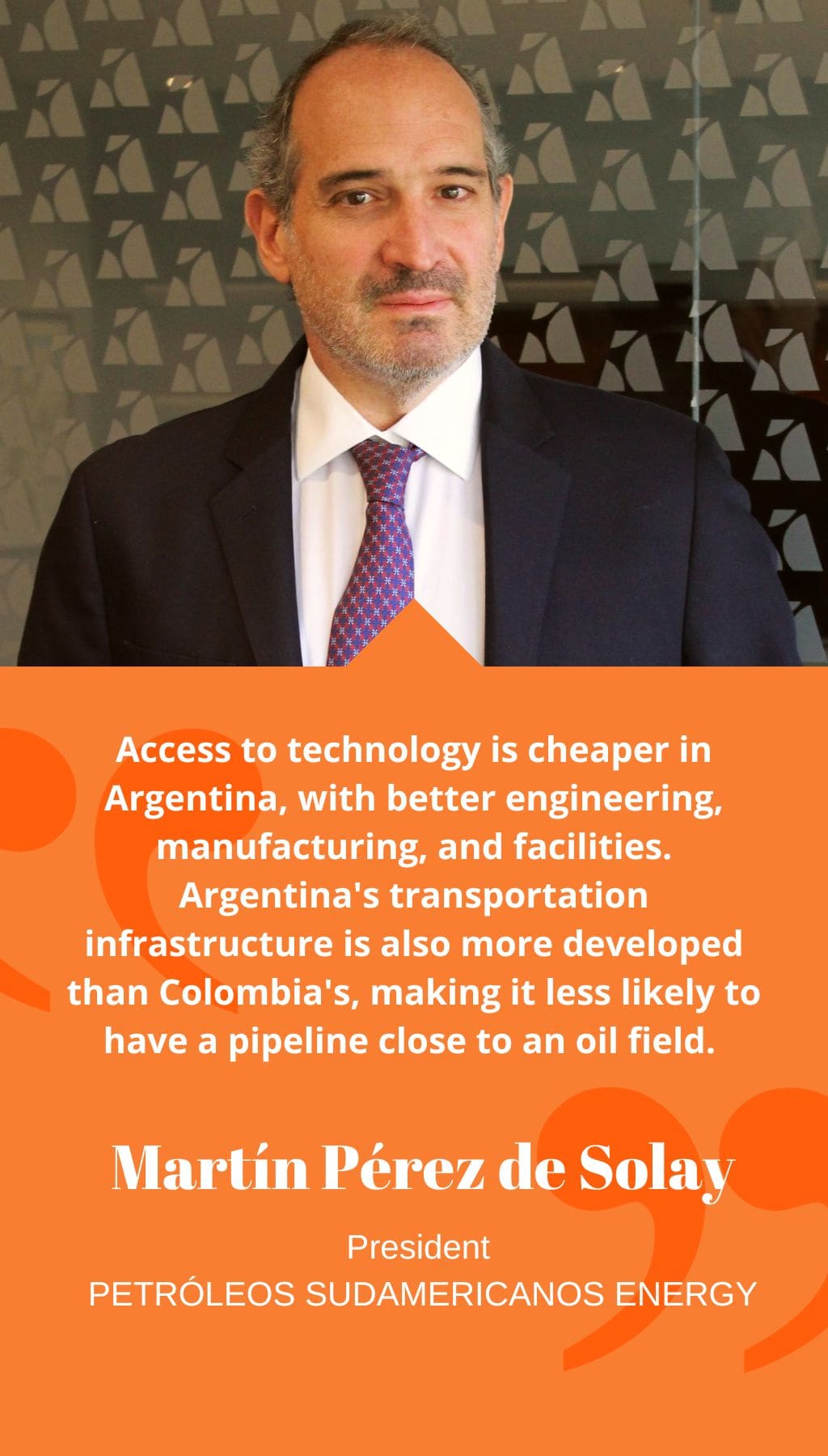
- Argentina | 22 March 2017

Can you provide an overview of Petróleo Sudamericano’s activities in Argentina?
Petróleo Sudamericano has been operating in Argentina since 1991, when it participated in the privatization of YPF and began working in the Caimancito oil field. In 1993, the company purchased interests in areas in the provinces of Neuquén and Rio Negro, where it continues to operate today. In Argentina, the company produces 1,600 barrels of oil per day.
What changes in the last ten years have affected the business of companies like Petróleo Sudamericano?
There have been three major changes in Argentina in recent years that have affected companies such as Petróleo Sudamericano. Firstly, there has been a shift in power from the national government to provincial governments, which has increased the control and regulatory capabilities of the provinces towards companies. Secondly, YPF, the national oil company, was re-nationalized. Thirdly, there has been an appreciation of the exchange rate.
Due to the passing of the Short Law (Ley Corta), control of oil and gas fields in Argentina was transferred from the national government to provincial governments. This meant that companies had to negotiate contract extensions with provincial governments instead of the national government, which required some adjustment. Companies had entered into 25-year contracts between 1990 and 1993, so all contracts matured between 2015 and 2017. While provinces like Neuquén, which have a background in oil and a government that understands the industry, were prepared to negotiate extensions, those with less background in the industry had a harder time. This required more education and time to understand the industry’s needs and issues.
For example, Petróleo Sudamericano has been negotiating with the provinces of Neuquén and Rio Negro to renegotiate their contracts. Negotiations with Rio Negro took longer than those with Neuquén, and as a result, the company has focused on maintaining its environmental liabilities rather than investing in the operational quality of the field.
What are Petróleo Sudamericano’s main activities in Argentina?
Petróleo Sudamericano focuses on secondary recovery and reservoir management on the eastern border of the Neuquén Basin. The company is also in discussions to acquire more fields in Argentina, particularly in the province of Neuquén. The company is significantly improving production facilities through electrification, automation, better separation, and treatment facilities, which improves not only the quality of oil but also the quality of water for secondary recovery projects, reduces discounts, and lowers operating costs.
How would you compare operating in Colombia versus Argentina?
Petróleo Sudamericano produces 4,500 barrels of oil equivalent per day, with 3,000 from Colombia and 1,500 from Argentina. There are significant differences between the two countries in terms of the depth of wells and environmental regulations. In Colombia, companies must drill more than 3,000 meters to reach the target, while in Argentina, it is around 1,000 meters.
Obtaining permits and performing appraisals in Colombia is a puzzle in terms of environmental regulations, requiring a lot of money and time. The geological formations in Colombia are different from those in Argentina, with strong aquifers in Colombian basins and significant secondary recovery projects required in wells in Neuquén. Access to technology is cheaper in Argentina, with better engineering, manufacturing, and facilities. Argentina’s transportation infrastructure is also more developed than Colombia’s, making it less likely to have a pipeline close to an oil field. Drilling wells is cheaper in Argentina, even though operational costs are higher due to union pressure to increase wages.














